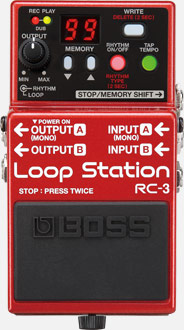
Podcast 36 – Revenue Streams
Featured, PodcastsWant to make more money in 2019? Well, have we got some slap-bang ideas for you! Also, how to get a celebrity to sing on your album, why Facebook is Totally Over, and John metaphorically cuts his hair. Also, the Monkees. And our music is excellent as always:
- North by North with Open Door
- Supervillain with That Boy’s a Beast FEAT. Nick Oliveri
- Secular Pains with Cut My Hair
- Hairy Nipples with Like Everybody Else
- The Holy Knives with Switchblade Heart
Thank you to Foot Gun for providing our theme song. (Hey- also!!!! Please take a second to like Holy Crap Records on Facebook and friend us or whatever on Twitter.)

Song We Like: Like Everybody Else by Hairy Nipples
Featured, Songs We LikeFor the first time in 2000+ years, here is an all-new take on conformity (we love it). John thinks they sound like the Monkees, and he also thinks that is a compliment. These Spanish mambo-punks will win your heart. Featured on our #36 podcast, Revenue Streams.

Song We Like: Switchblade Heart by The Holy Knives
Featured, Songs We LikeSounds like Chris Isaac, only much, much more interesting. This song is worth studying for the production alone. The Holy Knives is our new favorite San Antonio band. Featured on our #36 podcast, Revenue Streams.

Product Review: The Boss R-3 Looper for 4-Real Dummies
Featured, Product ReviewsA looper is quickly becoming something that every musician needs, but for those of us who are a little behind the eight ball in adopting computers into our practice/performance, it can be pretty daunting. Although I had been wanting a looper for years, I was not entirely sure what exactly a looper was. I sure did want one, though.

When our Boss R-3 looper arrived in the mail, John took it out of the box, plugged it in, and started playing with it immediately. I, feeling much more cautious, instead watched a bunch of Youtube videos about how to use it. In spite of our different learning methods, as you can see from our video performance, the speed-of-adoption of the technology was about the same for both of us (mediocre-to-acceptable). Squinting at the manual and watching Youtube are probably optional: the looper is frustrating in the beginning, but it’s built for stomping on — in hindsight, I say just go for it.
One thing that might help in learning to speak to your looper are your distant memories of a flip phone. Many of us learned (briefly) to triple-touch-type. Communication between you and your looper will have a similar morse-code kind of feel: Tap once to do something. Tap twice to do something else. Press a button and then tap and hold to do a third thing. You get it. Functions like looping, overdubbing, saving, and deleting are all tapping-sequences that you’ll have to memorize, but don’t worry — it’s relatively easy and it improves greatly with practice.
Any musician who has played with a click-track before knows that non-human drum beats are scary. An electronic rhythm will not flow with you. It will not wait if you mess up. It will not catch up to you when you get excited. Most of the youtube videos that I’d watched on the subject of looping gave strong and strenuous warnings that loopers were the meanest kinds of computers: The loops must be done exactly, exactly, EXACTLY on the ‘1’ — One-two-three-four-STOMP/start playing!-two-three-four-STOMP/stop playing! The video hosts — invariably longhaired young men who work in guitar stores — strongly implied that if you miss the `1’ by even a little, the whole thing will be ruined, and you’ll be embarrassed for the rest of your life. That made us pretty worried, as John was born without rhythm, and I am the stereotype that all dumb-drummer jokes are based upon.
Fortunately, the R-3, ‘Cadillac of Loopers’, seems to have been designed with imprecise people like myself and John in mind. As you see in the video, he misses the 1 by a fair amount on his first try, and the loop still sounds ok. I can’t explain how that works (it has something to do with their programming, and that, fortunately, is theirs and not mine to worry about), but I can say that John and I tried this many times and although our rhythmic skill didn’t necessarily improve, the looper continued to be friendly and work with us. Each time, it grabbed our loop, in its approximate relation to the `1’, matched it to our chosen beat (I should mention that the R-3 comes with a good handful of beats, a couple of which are quite fun), made it into what it thought we were trying to play, and off we went. It really will make you feel like a super cool musician. (If you already are a super-cool musician, I imagine that it will make you feel stratospheric.)
So what, specifically, do you need the Boss R-3 looper for? Although my initial vision of myself was of traveling the world performing in one of those looper festivals, beatboxing and violin playing with all those tattooed girls with dreadlocks, in practice the R-3 turned out to be a much more practical tool. It’s a workhorse, and specifically a workhorse that wants to practice with you: if you play an instrument that doesn’t practice well alone, such as bass, or drums, or if you’re working on your complicated face-melting solos, putting down a short guitar riff into the looper will make you feel like you’re practicing with a band. (A version of the band that will not guffaw at your mistakes, so go nuts with those solos.) It also holds up to 99 saved loops, which is handy, as John and I are already up to 17. It will also attach by USB to bring beats back and forth to your computer. I tried to bring a couple of loops into GarageBand and I have to report that this worked only fifty percent of the time; that may, however, have been because of my cord. You know how cords are.
By itself, the Boss R-3 looper may not be good for performance, because it won’t switch loops between parts of the song (I’m told an attachment, called a ‘twin,’ —which we will review anon—, will allow for this); however, what about adding a continuous (or occasional) human beatbox to your next show? As you observe in the video, the R-3 looper makes it damn easy. Welcome to the future.

Podcast 35: Walt Whitman
Featured, PodcastsJohn gets stuck in a dress. Profanity is newly-offensive. Dead Singers fucking speak to us: specifically, Simon LeBon -who is still living- gives John permission to be a sexy poster boy. Also, a special guest appearance by sexy dead poet Walt Whitman himself. And our music is excellent as always:
- Family Vacation with Kathy
- Annie More with Homme-Enfant
- Flight to Dubai with Hail Damage
- Rebecca F. with Dead Singers
- BROTHRS with Losing Things
Thank you to Foot Gun for providing our theme song. (Hey- also!!!! Please take a second to like Holy Crap Records on Facebook and friend us or whatever on Twitter.)

Song We Like: Losing Things by BROTHRS
Featured, Songs We LikeWe don’t merely like this song, we LOVE it. Two charming brothRs from the sticks of Western North Carolina are out-popping and out-souling some of the greats here, and they sound like they’re not even trying. We will enjoy saying we knew you when, and when we do, we’ll also say we told you so. (Featured on our #35 podcast, Walt Whitman)

Song We Like: Dead Singers by Rebecca F
Featured, Songs We LikeI mean, she pretty much says what we were all thinking. Some singer who is disconnected to you, never met you, and is, moreover, dead, can be your soulmate and truly good friend. It is one of life’s great mysteries, and it’s something everyone has experienced. Way to exploit both profanity and metaphysics, Rebecca F! Good work. (Featured on our #35 podcast, Walt Whitman)

Album Review: Definitely Blue by Wallin-Jison
Album Reviews, FeaturedThis Swedish Americana band sounds (and looks) like they should be playing in a roadhouse in Tennessee. Their collection of simple blues songs demonstrates that complexity is not necessary if you’re absolutely nailing the songwriting and execution. Our favorite song: Move Around the Room. (Featured on our #31 podcast, Vive la revolution.) (BTW I said their name wrong about 15 times on the podcast. It’s Wallin-JISON, not Wallin-JiNson. Whoops…Sorry…)
